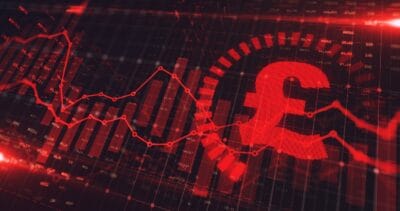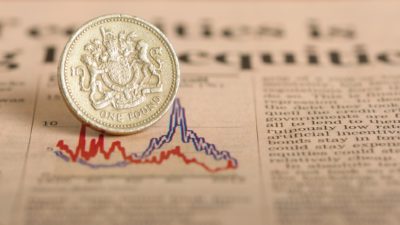Some say that valuation techniques go in and out of style. Traditional investors look a the P/E ratio, but now buzzwords like return on invested capital (ROIC) and cashflow return on investment (CFROI) are catching on.
In addition, over the last few years — thanks to the glitz of the M&A world where deals are quoted in EV/EBITDA (enterprise value divided by earnings before interest, tax, depreciation and amortisation) terms — we see earnings per share (EPS) being displaced by EBITDA.
Of course, traditional punters began to scoff (correctly, in my opinion) that it’s not difficult to find a near-worthless firm with bulky EBITDA numbers. A quick glance at Premier Foods‘ financials is all the proof we need.
Should you invest £1,000 in Aviva right now?
When investing expert Mark Rogers has a stock tip, it can pay to listen. After all, the flagship Motley Fool Share Advisor newsletter he has run for nearly a decade has provided thousands of paying members with top stock recommendations from the UK and US markets. And right now, Mark thinks there are 6 standout stocks that investors should consider buying. Want to see if Aviva made the list?
More importantly, Warren Buffett has been an ardent critic of EBITDA. His criticism, in general terms, comes down to three points: EBITDA does not account for depreciation, taxes and interest payments, which are all very real costs to the company. His observations are consistent with latest academic thinking, and most investors these days should have a copy of Valuation Measuring and Managing Value of Companies next to the Intelligent Investor.
Consequently, when I have time for a proper model and valuation, my preferred measure of profits is Net Operating Profit Less Adjusted Taxes (NOPLAT). In effect, it is a ‘lower down the profit and loss (P&L)” derivative of EBITDA that includes both depreciation, operational amortisation and recognises the tax expense. I usually follow my analysis with a debt and liquidity assessment, after forecasting of capital expenditure and net working capital.
Nonetheless, EBITDA continues to litter the financial press, so it must have some merits. Chiefly, I would argue, it can represent a rough-and-ready measure of NOPLAT, and can be helpful in two ways. First of all, it’s useful for comparing companies in a similar industry within a single country. For instance, retailers or telecoms in the UK all face similar tax rates and would find it difficult to differentiate themselves in terms of real investments they make. Thus, comparing the EV/EBITDA ratios of these firms is a good start for measuring their value, especially when debt levels are low.
Also, note that Mr Buffett’s criticism is a bit US-centric. Tax code is very complex Stateside, and the use of operating leases is more pronounced. This allows accountants to play tricks: some may add value by lowering taxes, and some may be borderline fraudulently obfuscating the asset base. Secondly, I find the change of EBITDA margins as good representation of trends in operating costs and operating leverage of a company. It is useful for measuring past performance and helps with modelling of future profit.
What about using EPS and the good-old-fashioned price-to-earnings (P/E) ratio? It clearly side-steps all of Mr Buffett’s criticisms. Valuation academics would say that this measure is less suited to making comparisons. It’s sensitive to a company’s leverage, a CFO’s subjective choice, and varies from firm to firm and across time. EV/NOPLAT is popular among the theorists because it approximates the P/E ratio in a scenario when a firm is financed only by equity.
I would raise another point: calculating EPS that correctly adjusts for temporary P&L items is difficult and time-consuming. Even if companies do report ‘core’ EPS, it takes a lot of effort to untangle. Assessing valuation, at least initially, with EBITDA or EBIT figures just seems easier.
Many companies, especially in the UK, understand the thinking described above. That is why many report non-generally accepted accounting principles items such as inter alia ‘Trading Profit’ or ‘Adjusted EBIT(A)’. However, although these items are very close to pre-tax NOPLAT, looking at the items they omit or ‘adjust’ is not a bad idea…







